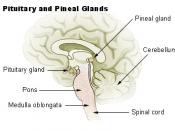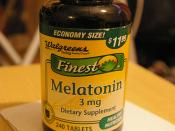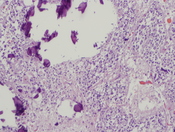Good as a resarch paper or to serve as a crash course in the workings of the pineal gland and melatonin. She liked it, and understood that my resources were limited as melatonin is still a recent medical development
Set deep in our brains is a tiny gland called the pineal gland. This tiny gland is in charge of the endocrine system, the glandular system that controls most of our bodily functions. The pineal runs our Oebody clocks', and it produces melatonin; the hormone that may prove to be the biggest medical discovery since penicilin, and the key to controlling the aging process. The pineal gland controls such functions as our sleeping cycle and the change of body temperature that we undergo with the changing seasons. It tells animals when to migrate north and south, and when to grow or shed heavy coats. By slowing down and speeding up their metabolisms, it tells them when to fatten up for hibernation, and when to wake up from hibernation in the spring.
Melatonin is the hormone that controls not only when we feel sleepy, but the rate at which we age, when we go through puberty, and how well our immune systems fend off diseases. Being set in the middle of our brains, the pineal gland has no direct access to sunlight. Our eyes send it a message of how much sunlight they see, and when it's dark. The sunlight prohibits the gland from producing melatonin, so at night, when there's no sun, the sleep-inducing hormone is released into our bodies. Because of the pineal gland and melatonin, humans have known to sleep at night and wake during the day since long before the age of alarm clocks.
Humans don't produce melatonin right from birth; it is transfered in utero to babies...


